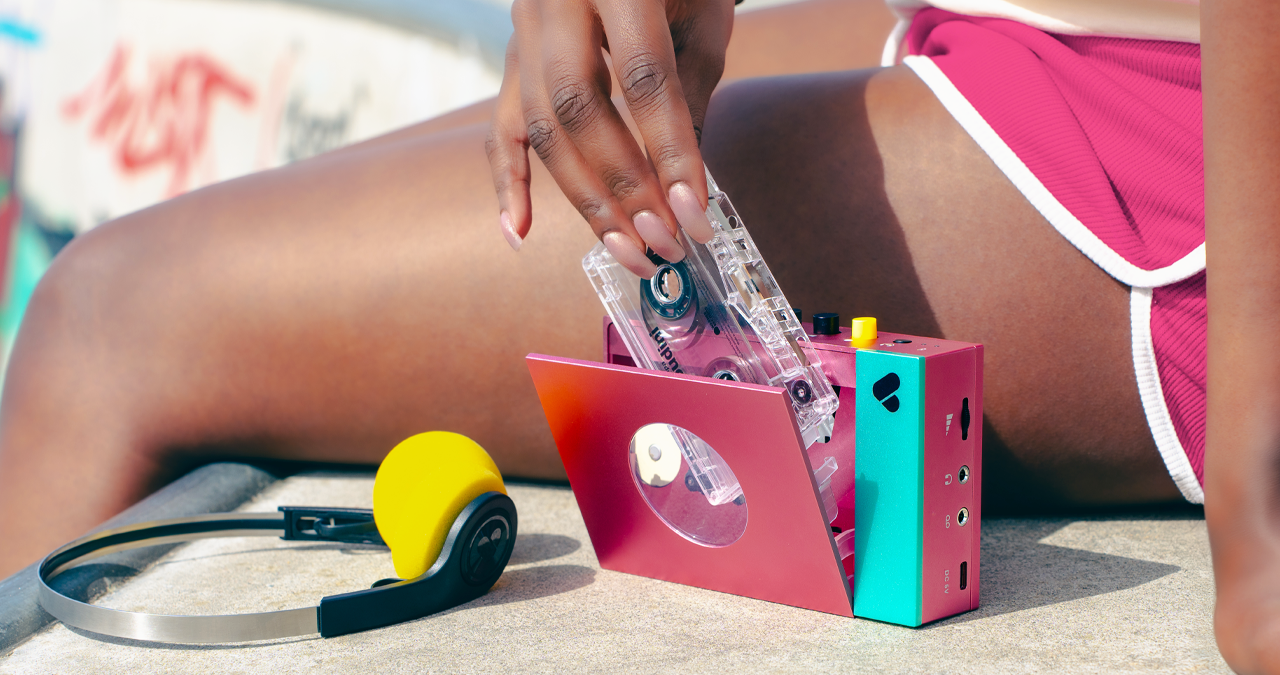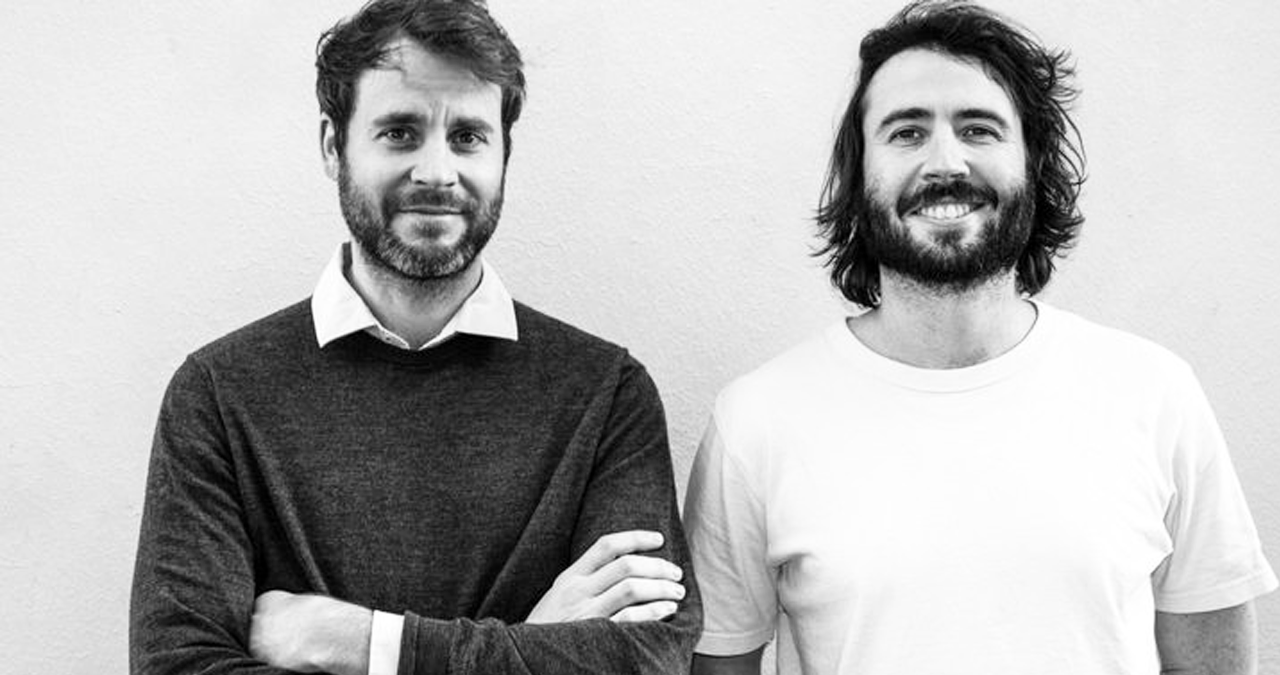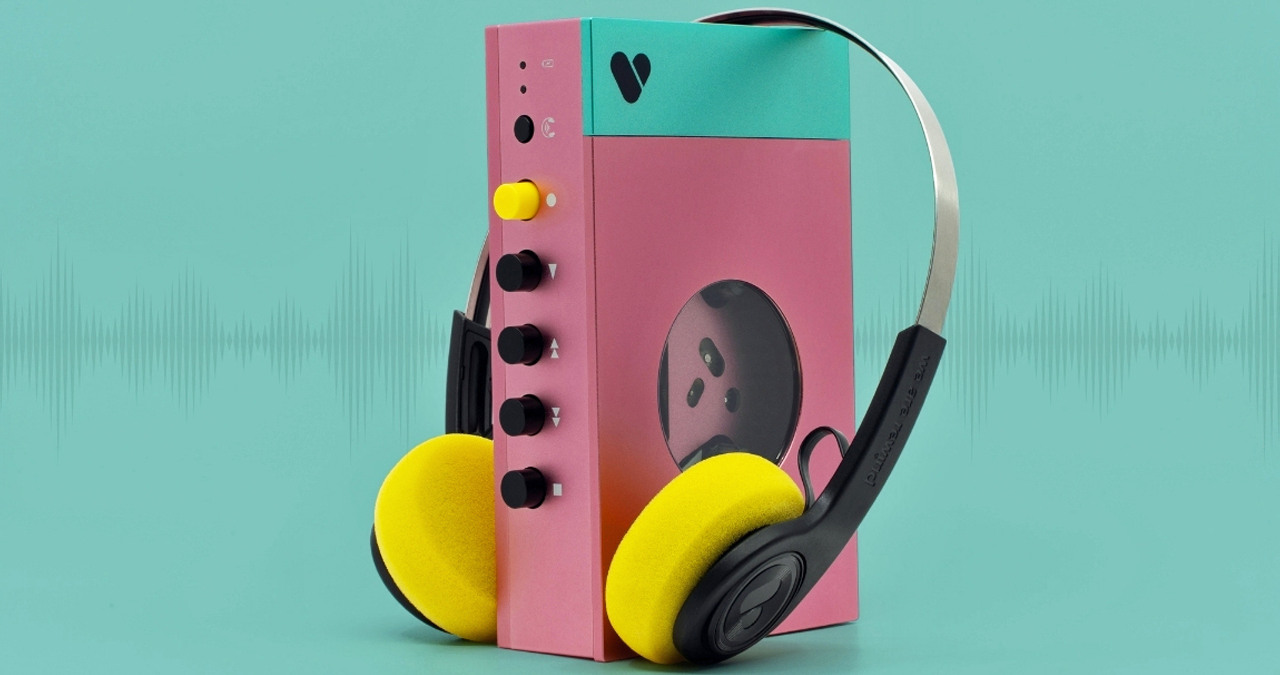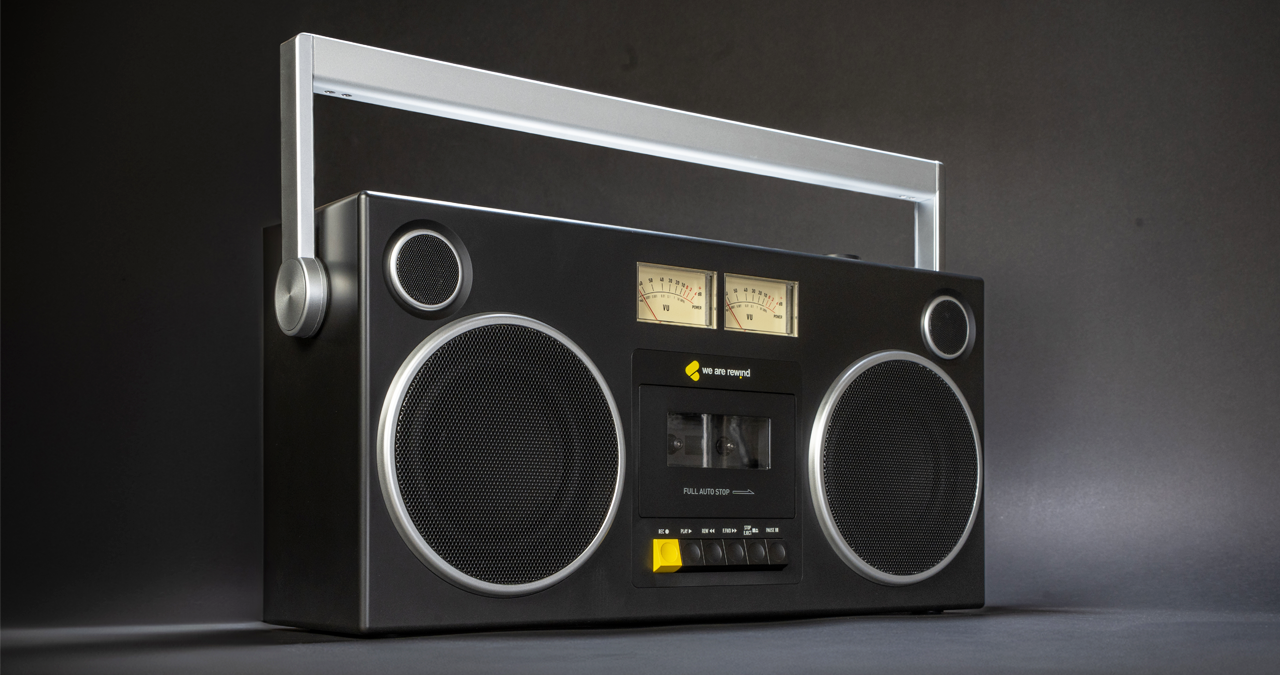“When times are very uncertain, people really love to go back to when they felt secure - a more reassuring time”: We speak to the company aiming to repopularise the personal cassette player
We Are Rewind is on a mission to get everyone digging out their old tapes once again

We’re just about old enough to remember the era when cassettes were the chief music listening format. Those little plastic rectangles which housed miniature tape spools were quite a finicky and often unreliable format for containing your favourite music, and they weren’t a safe bet for long-term storage either.
But still, there was something - much like the vinyl format - about the way cassette tapes sounded. There was the engagement engendered from that physical interaction with your listening medium, the tactile mini-thrill of just pressing substantial, clicky buttons. It's an element of music listening that we're finding ourselves warming to more and more as we progress ever further into the smartphone-dominated 21st century.
The appeal of this type of format-nostalgia is shared by We Are Rewind, the French company who (with a little help from a cabal of seasoned engineers who worked on portable cassette players back in the golden age of tape) has created an all-new breed of modern personal cassette players, which balance the legacy mechanics with some of today's bells and whistles such as Bluetooth 5.1 functionality and a rechargeable battery.
Now, ahead of the release of the company’s impressive looking take on the classic boombox, we spoke to We Are Rewind’s co-founder Romain Boudruche, and found out more about how the team overcame myriad obstacles to bring this classic format back to life. Let's hit play.
MusicRadar: Hi there Romain, firstly can you kind of give our readers a bit of background on We Are Rewind, how did the company first get off the ground?
Romain Boudruche: “I used to be a copywriter in advertising for around 10 years, and I was kind of fed up with the advertising industry. I had a friend Matthieu Mazieres who, at the time, was unemployed and he mentioned the fact that he had some money set aside. We discussed creating an independent project.
"I really wanted [to start] something about nostalgia. I didn't know why, but at that time, I found that there was something interesting there.
"I saw an article which mentioned the fact that cassette tapes were having a very small boom, and [the format] was back. The first question I asked myself was how are people going to listen to these tapes again? I mean - there are no more cassette players available.
"So, this is how it started. There were these low quality tape players, made of plastic, available on Amazon. And so, I thought it would be interesting maybe to offer an in-between, because you could also buy some very [high-end] devices [which originated] from the 80s.
"I was thinking maybe we could try to do something which could be both a quality cassette player made of aluminum with a neat design, and we could also maybe implement a few more modern features into it. That had not been done at that time.
"Matthieu used to work for some labels and before that, he worked for Sony, and is now still working as a part time for an African music label. I grew up in a family where music was all around, so it's very cool that we are now in the music industry. This is a fun project. We didn't have any ambitions in the first place. It was just like a friendship project, a labor of love."
Want all the hottest music and gear news, reviews, deals, features and more, direct to your inbox? Sign up here.
MR: So did you guys share that same kind of specific nostalgia for the cassette format? Did you grow up with them?
RB: "I had a few. I'm actually more [from the] CD era. I was born in 1988, but I have an older brother who is a musician. He used to make a lot of mix tapes back in the day, and I remember borrowing his cassette players because I wasn't allowed to have a CD player.
"I was big into vinyl collecting, but I don’t really have this big feeling of being overwhelmed with the [quantity of] streaming media and things like that, I just enjoyed the fact that I could have a physical thing. I definitely felt that there was something at that time, like six years ago, that was already [in the air] and it's just had been confirmed for us for the past years."

MR: It must have been quite a technical challenge to bring back the physical cassette player and its internal mechanics. How did you source the parts and build your stock?
RB: "The first step was finding someone who could manufacture.
"The idea was to get the best we could from the [currently widely used] mechanism, used for the cheaper models. But when we looked around for manufacturers we realised that a great many had been closed. Sony had closed its last manufacturer saying there was no business in it anymore. Tape simply was not big enough, there was no interest. So they closed everything.
"There was this one existing manufacturer in China. But the idea was to see how we could improve every piece of this existing mechanism. We wanted to see how we could get as close as we could to the 80s devices that you could [still get hold of] at that time.
"We have been very lucky, because we’d been struggling with many issues. Actually, the first one was the fact that there was COVID, and so that just killed us for almost two years.
"After months, we were like, ‘Okay, we are not going to be able to make it.’ We actually had a Kickstarter, and so many people were waiting for their orders. So, every night, I went to bed thinking, ‘Oh, my God, I'm gonna have to refund everyone.’
"But luckily, we found an excellent French manufacturer, which is in the West of France called RTM (Recording The Masters). They made excellent blank tapes, and also reel to reel and magnetic heads. I contacted the boss of the company, because we knew we wanted to have a record function on our tape players.
"So, I called him and explained to him our project, and he said, ‘Okay, this is really great, because I also make my own cassette players which I sell on our website.’
"Then he said he wasn’t interested in making money from cassette players himself, but said ’I'm really keen to see you succeed with cassette players, because the better you go, the bigger [the market] to sell tapes.
"It's very well connected, so it became more like a partnership.
"The [engineering team] that RTM worked with were quite small, and were once based in Singapore. These were engineers of 70+ years, they used to work for Thomson for many years. [The boss of RTM] put me in touch with them.
"The company was called ORA and they told us that they made this special cassette player for RTM, which was called the B-1000. It’s a really good device. We made some tests on it, and they had already made many improvements on the mechanism
"It wasn’t a very ‘designed’ appearance, though. It was just a plastic one. But inside was the [widely-used] mechanism, but with many improvements. The sound quality was extremely decent. So, we bought the license of the B-1000 from RTM, and we decided to work with ORA to see how we could develop our own devices and make even more improvements, as well as implement these special features.
"These were the first steps, we were very lucky to find the engineers, because these are extremely rare resources right now."

MR: Yeah, that does sound like a challenge. I guess having those extra, modern features makes the players more attractive for younger listeners. There’s also the sleek and cool design aesthetic. How long did it take you to land on the look of your players?
RB: “We had three proposals from our designer. He was actually the designer from the first company we worked with. We asked him to make some proposals. And he made this first one, which looked almost like a Polaroid [camera], because of the circle window. We made a few adjustments because of the mechanisms, size and everything and we decided to go with that one. It was inspired by [German Industrial Designer] Dieter Rams. Of course, he was a big fan of the 1980s design ethos.
"We have always said that we wanted to have something very neat, very designed. We had this model, which was a Polaroid [camera], because they were kind of devices that you would use a few times, and after that, you are just going to put it on the shelf in the living room and just have it as a decoration.
"I was definitely convinced that most of the people would not use their cassette players every day. In a way it would be just like the vinyl records; a very ceremonial thing that you play sometimes, perhaps a few times in a year, The rest of the time you are just happy to have this beautiful device on your shelf.
"So we wanted to create something very neat, and this is why we used aluminium instead of all the plastic. And that was how our tape player (aka ‘EDITH') got off the ground."

MR: Earlier this year, you collaborated with Chromeo for the all-chrome, co-branded version. How did that collaboration get off the ground? Are artist collabs like that something you want to do more of going forward?
RB: “It’s absolutely mandatory for our business. We are going to try and follow the example of the lifestyle brands who make drops every month and work on collaborations with brands and artists.
"For the Chromeo collaboration, it was them who dropped us an email. They said ‘We found your device, I think it’s so cool.’ They suggested we collaborate and put together an all-chrome cassette player. After that, we decided that we would definitely go more in this direction. We have plenty of collabs on the fire.
"We are in discussions with other artists. Some international artists which will be much bigger than the Chromeo collab…"
MR: Recently you announced the BOOMBOX GB-001, it’s an impressive piece of kit with 104 watts of power and full-spectrum stereo audio. Again the retro design is on point, and the VU meters are a really nice touch too. What made you switch focus to doing a boombox next after the cassette player?
RB: “Actually it was the logical way forward for us after the personal cassette players. We had messages in our inbox and on our Instagram from people saying ‘Ah, I wish you guys would make some boomboxes. We also get messages asking for portable CD players too, of course.
What’s very interesting about this device is we’re not selling it as only a cassette player/recorder - we are mostly selling it as a very cool, designed, connected speaker.
"If we stayed too focused on the tape angle then we would still be in a niche domain. We want to open up and interest a larger audience. So our BOOMBOX is really competing with some Marshall speakers, JBL, Sonos - some of those bigger music listening brands.
"All [those types of devices] look the same, they haven’t really changed in the past ten or fifteen years. I have really big hopes for [BOOMBOX]. We want it to be as good as a Marshall speaker. All our tests were made to make sure we were able to reach this. Actually, we’re a little better.

"We wanted BOOMBOX to be as good as what they can do but with our own identity and our own design. Marshall is aimed at the rock market and we’re more angled toward hip-hop.
"The boombox is the emblematic device of the 1970s and ’80s hip hop, and that’s now one of the world’s biggest genres. There’s nothing bigger.
"We try to stay open, it’s not only for [hip-hop] but yeah I believe this device will interest more people, not only people who are looking for a ‘cassette player’ but people who are just looking for a very good speaker with a very nice design."
MR: It also has the added advantage of being able to jack in a guitar or a microphone to record yourself playing and singing. What motivated you to include that recording input functionality?
RB: “We knew that there was an interest in the Japan and East Asia market. The Japanese are very keen for tech to have these karaoke-type features. I asked our engineers; ‘do you think that we could implement the ability to sing at the same time’? [as the audio playback]. I believed that Japanese people would be very interested in this functionality. They said, yes, definitely.
"Then we thought, if we could make it with a microphone, we could also have it serve as a guitar amplifier.
"As it’s stereo, you can put your vocal, or guitar on the left, on the right, with the [stereo] knob, you can definitely play with that and see the difference. The sounds are actually wider. We worked also on that [so you can] really feel the stereo image that you have when you listen to it.
"If you put it in front of you, you can definitely feel the difference on left and right, especially with older, 1970s songs. It’s just like you’re in the studio."
MR: Do you think people will start using the BOOMBOX GB-001 for music-making purposes, then? Is that (music production) direction an area you want We Are Rewind to pursue? After all, many swear by tape when recording their sounds…
RB: "We didn't expect it, but even our portable cassette players have been used by musicians. We have people who tag us or message us on Instagram. We think that our boombox will be especially interesting because the record function is a very good quality one. We actually have a Sony mechanic in it.
"Aside from recording, we get many small bands who also contact us, saying, ‘Ah, we would like to make a partnership’ [to sell cassette versions of their albums at their gigs]. It's much easier for them to produce some tapes and sell them for like €2.
"But people do use cassette and tape decks to record their albums, even in the big leagues. I'm listening to the podcast on the French Touch movement right now, and it explains how Daft Punk’s Thomas Bangalter recorded using a boombox. He always said ‘if it sounds really good on the boombox, it will anywhere’. So it was for his reference. He was always using a really old boombox to check the sound quality."
MR: Well that’s an endorsement for the boombox, right there, isn't it? Beyond your actual players themselves, have you considered curating your own cassette mixtapes or maybe a cassette-only label?
RB: "On the retro side it's complicated. We wanted to have the possibility of having a list of songs on our website, so people could just pick from some of them, and we would then make a mixtape for them directly and send to them alongside the device. It would have been very fun to do that, but it's actually so complicated [from a rights point of view].
"Right now we are also trying to open a special page for a few selection of tapes. We’d like to have, say, 20 albums. We’re not going to make a lot of money. It's not part of it. It's just more we believe it's fun and it's cool to have everything at the same place."
MR: What do you personally think lay behind the resurgence of interest in retro formats like cassette?
RB: “We had an interview three years ago with a social expert who mentioned the fact that when times are very uncertain, people really love to go back to a time when they felt secure - a more reassuring time. So it’s not only the fact that everything is going too fast and everything is digital, although that’s part of it. I love to press on [real buttons].
"It’s sort of a social thing, people sometimes feel scared. Even if it's a time that they didn't really know, going back to a past era can be reassuring.
"It’s good to bring back some memories, and sometimes that can just be from the ‘click’ of the way you put it in."
For more info on We Are Rewind, and to peruse its roster of cassette players - and get the lowdown on the upcoming BOOMBOX GB-001 - head to the company's website here

I'm Andy, the Music-Making Ed here at MusicRadar. My work explores both the inner-workings of how music is made, and frequently digs into the history and development of popular music.
Previously the editor of Computer Music, my career has included editing MusicTech magazine and website and writing about music-making and listening for titles such as NME, Classic Pop, Audio Media International, Guitar.com and Uncut.
When I'm not writing about music, I'm making it. I release tracks under the name ALP.
You must confirm your public display name before commenting
Please logout and then login again, you will then be prompted to enter your display name.

